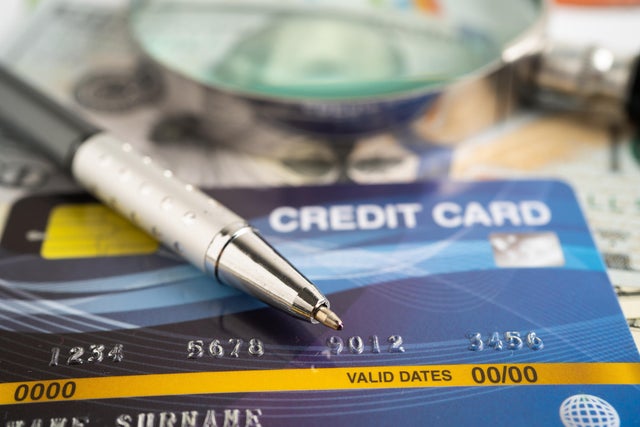What is credit card forbearance, and who qualifies for it in September?
As credit card balances hit new highs, many Americans are feeling the strain. According to the Federal Reserve Bank of New York, total credit card debt surpassed $1.2 trillion earlier this year, with the average household carrying nearly $8,000 in revolving balances. On top of that, credit card interest rates remain near record levels as they hover near 22% on average, which means even modest debts are growing more expensive by the month.
The rising cost of borrowing is also colliding with another troubling trend: late payments. Delinquencies on credit card accounts have been steadily climbing, particularly among younger borrowers and those with lower incomes. And, for some, a missed payment or two is all it takes to trigger a cycle of fees, penalty APRs and mounting financial stress. In this environment, it's no surprise that many cardholders are searching for relief from their high-rate credit card debt wherever they can find it.
One option that sometimes surfaces during economic strain is credit card forbearance. While it isn't as widely discussed as many other debt relief strategies, forbearance can give borrowers breathing room in the short term. But not everyone is eligible, and those who do qualify should weigh the trade-offs carefully.
Find out what debt relief strategies you can use to get some breathing room today.
What is credit card forbearance?
Credit card forbearance is a temporary arrangement offered by some credit card issuers that allows borrowers to pause or reduce their payments for a limited period of time. Unlike debt forgiveness, it doesn't erase what you owe. Instead, it gives you extra time to get your finances in order without the immediate pressure of making full monthly payments.
Forbearance programs may vary depending on the issuer, but they typically include:
- Payment pauses or reductions: Some lenders may let you skip payments entirely for one or two billing cycles, while others may require partial payments.
- Fee waivers: Late fees and penalty charges may be temporarily suspended.
- Interest relief: In certain cases, issuers may reduce or freeze interest charges during the forbearance period, though this isn't guaranteed.
It's important to remember that forbearance is a short-term solution. Once the program ends, your payments resume, and in many cases, interest continues to accrue on the outstanding balance even during the forbearance period. That means your debt could grow larger if you're not careful.
Learn more about the debt relief options available to you here.
Who qualifies for credit card forbearance in September?
Credit card forbearance isn't automatically granted. It's typically reserved for borrowers facing legitimate financial hardship. And many issuers have been tightening their standards, making it more important than ever to demonstrate a clear need. That said, you may qualify if:
- You've experienced a job loss or reduction in income. Many credit card issuers require proof of unemployment or significantly reduced hours to approve forbearance.
- You've been impacted by unexpected expenses. Facing a genuine unexpected expense, like major medical bills, emergency home repairs or other sudden financial shocks, can help you qualify.
- You've maintained a history of on-time payments until recently. Credit card issuers are more likely to approve forbearance if you were previously a reliable customer but have recently fallen behind due to hardship.
- You proactively reach out. Forbearance isn't automatic. You still need to contact your credit card company directly, explain your situation and ask about available hardship programs.
Even if you meet these criteria, approval is not guaranteed. After all, some issuers are more willing to offer forbearance than others, and each lender sets its own rules.
What to do if you don't qualify for credit card forbearance
If your issuer doesn't approve you for forbearance, you still have options to regain control of your debt. Some alternatives include:
- Debt management: Working with a credit counseling agency can result in a debt management plan that helps you consolidate your payments and potentially reduce your fees and interest rates.
- Debt consolidation loans: With debt consolidation, you combine your credit card balances into a single loan with a fixed, often lower, interest rate.
- Balance transfer credit cards: You also have the option to move your high-rate credit card balances to a card with a 0% introductory APR, giving you time to pay down debt interest-free.
- Debt forgiveness: With debt forgiveness, the goal is to negotiate with your creditors, often through a debt relief company, to try and settle for less than you owe in return for a lump-sum payment on the account. The remainder of the balance is then forgiven.
- Bankruptcy: While it carries long-term consequences, filing for bankruptcy may be necessary to get relief if your debt load is unmanageable.
The bottom line
Credit card forbearance can provide short-term relief if you're struggling to make ends meet this fall, but it's not a cure-all. Qualifying requires proof of hardship, and even then, your lender may or may not agree to pause your payments. For those who don't qualify, other debt relief strategies, from balance transfers to debt management plans, can provide a more sustainable path forward.
No matter what route you take, though, it's a good idea to act quickly. Waiting until your account balance grows or you slip deeper into delinquency can limit your options and make it harder to recover. By reaching out to your lender and exploring alternatives now, though, you'll put yourself in a better position to regain control of your finances before the problem grows.
